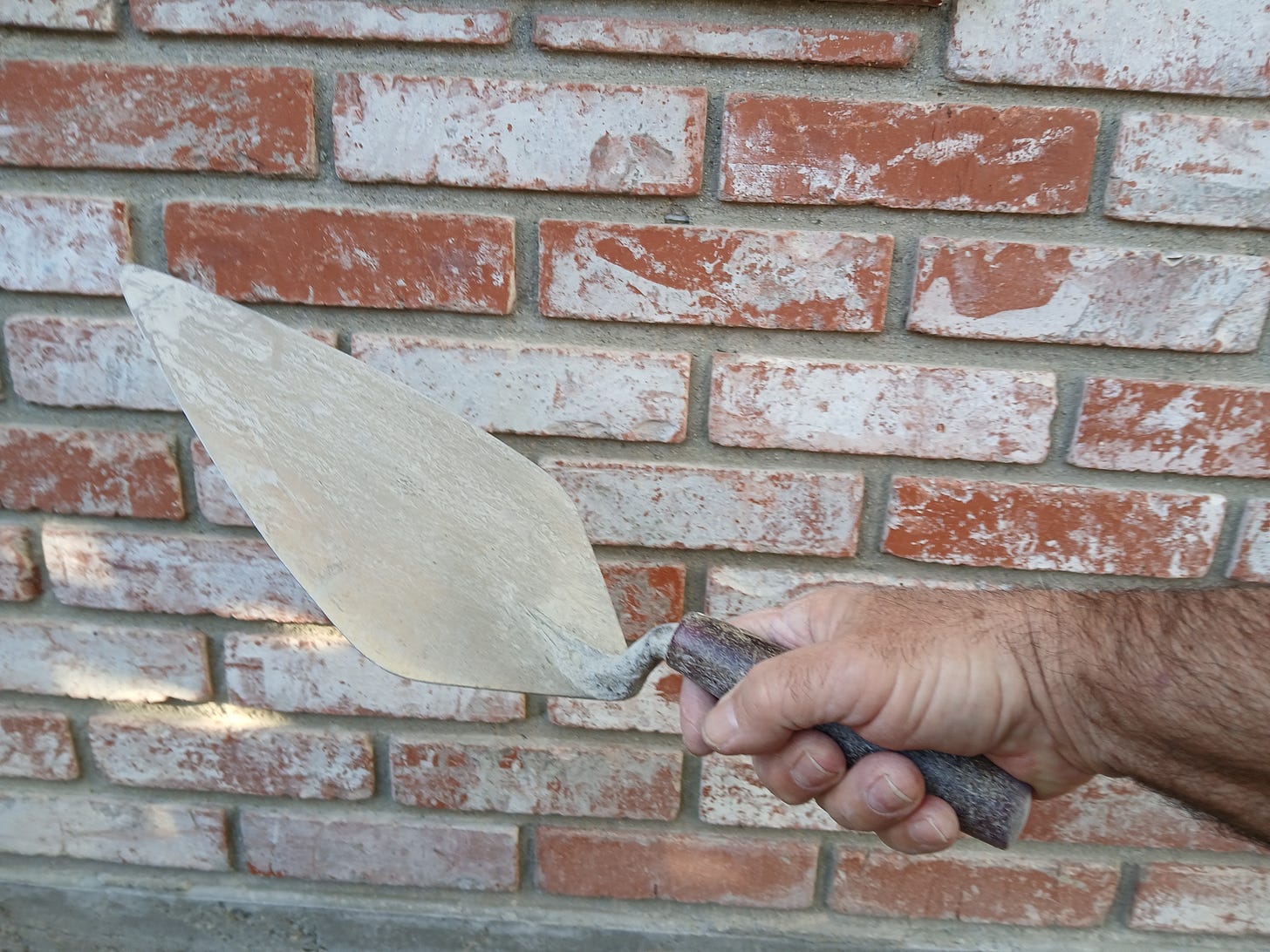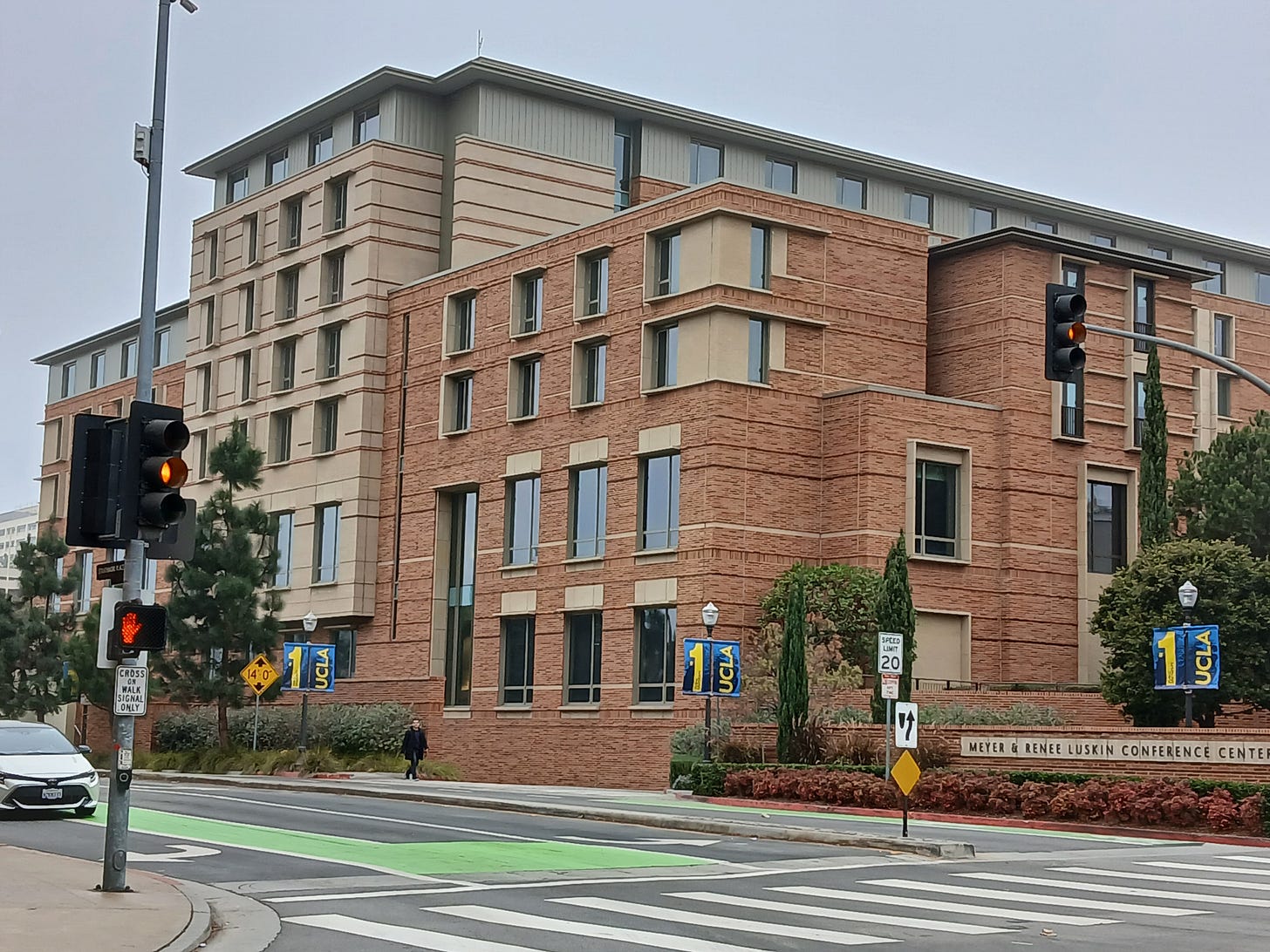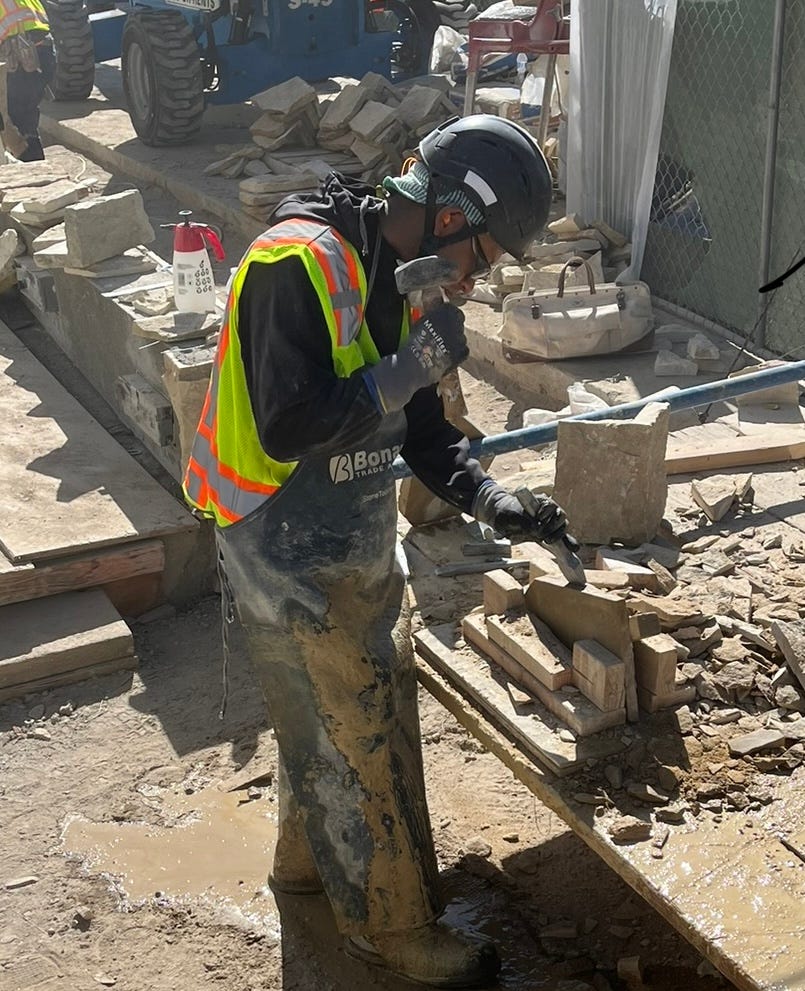“Toiling—rejoicing—sorrowing
Onward through life he goes;
Each morning sees some task begin,
Each evening sees it close;
Something attempted, something done,
He earned a night’s repose.”
--Henry Wadsworth Longfellow
Forty some odd years ago as I was just beginning my trade as a bricklayer the old ones would tell me, “Young man, before you retire machines will be laying brick and block buildings and you’ll be out of a job.” Well there are new technologies and tools that have made my life as a bricklayer easier and more productive, but the trowel in my hand has not changed one bit since I started. As a matter of fact it hasn’t changed much in thousands of years.
The first ones were made of stone and solved a problem for the ancient Egyptian and Mesopotamian’s need for a tool to plaster walls and set stones in mortar. The modern trowel evolved with the invention of tempered steel in the 1700’s. Today there are many varieties of trowels to fit the needs of specific jobs. Concrete finishers need a flat one with a lot of area to be more efficient. Smaller trowels are used for restoring existing brick and stone structures designed to push mortar into thin joints between the brick or stone.
But the trowel I use is referred to as the London trowel. Most bricklayers use one of two types; London or Philadelphia. The Philadelphia trowel is a bit wider near the handle than the London. They are both between ten and twelve inches long. Most of us use the London style because it holds less mortar on the blade which reduces stress on our wrist and elbows.
The great structures of ancient Rome and the Gothic cathedrals of the Middle Ages were not designed by degreed mathematical engineers. They were built by the Mason whose knowledge came of intuitive mechanics. The mason was not only the tradesman, but the engineer and architect. J. Bronowski describes the mason of that time:
“The mason carried in their heads a stock, not so much of patterns as of ideas, that grew by experience as they went from one site to the next. They also carried with them a kit of light tools…
“The wandering builders were an intellectual aristocracy… and could move all over Europe, sure of a job and a welcome; they called themselves freemasons as early as the fourteenth century. The skill that they carried in their hands and in their heads seemed to others to be as much a mystery as a tradition, a secret fund of knowledge that stood outside the dreary formalism of pulpit learning that the universities taught.”
Today, the trade is more of an art or craft than that of the science of engineering; the tradesman is overshadowed by the structural engineer, the architect and the Building department with all their specifications and qualifications; mostly for the good but not all.
I reflect upon my trowel lately because I am approaching the end of my usefulness, for I have entered the winter of life, and for the past few years I have been working on run-of-the-mill ordinary jobs building common ordinary concrete block structures with little character. Not like years past when I helped build the Ronald Reagan Library, and many brick buildings on the campus’ of UCLA and USC. But recently I am working on a project that requires some of the techniques of the past—shaping handmade stone with a hammer and chisel in an old California Mission style.
I used to envy the guy who put on his suit and tie and labored in physical ease. Most of these types seldom see a physical result to their toil. More and more I can appreciate that at the end of every day I can see something that I helped to make with my own hands. And after all the parts are in place, there is the reward of seeing a new thing that was not there before.
The dignity of man depends on his work and the liberty to use his talents to satisfy his needs and wants. Work and productivity provide purpose and worth to our lives and how we do these things give meaning.
I found such things in working next to my friend Junior who was twenty years my elder. We met on the job and discovered we lived near each other so we ended up carpooling to work for ten years. He was a good bricklayer and he looked like a freight train chugging down the line with a cigarette in his mouth leaving a trail of smoke behind. At the end of many a day, I would throw my tools in the back of my truck, we would jump in and I would snap, “You’re killing me Junior.” He would gently say, “I’m only trying to lay one more brick than you David.”
“That’s funny; I’m doing the same thing.”
That trowel in my hand enables me to transcend the ages. In my striving for excellence I can now take pleasure in my skill while my skill still means something. Who knows what will become of my trade? Should I be telling the youngins’ their trade is not long for this world? I don’t think that’s true. Maybe in years to come a trowel will not be used in a human hand, but a hand will still be useful.
And perhaps in the years to come, in the new age of Artificial Intelligence, if there are any people, they will look at what I build today and say, “What a marvel, this was made by a person with his own hands.”
Take Care
Apparently everyone on the mailing list does not receive freedomfirst.substack.com when published. If you missed the last essay, here is the link.
***
If you hit the HEART at the top or bottom of the page it makes it easier for others to find freedom first.
***
--Please check out the Notes tab on the Home Page of freedomfirst.substack.com for more thoughts. And consider downloading the Substack.com app to your mobile device to receive the Notes in real time. It works similar to Instagram.









I have always envied and admired craftsmen like you, who had the satisfaction of leaving behind monuments to your skill. I had no skill but writing. I couldn't pound a nail straight but I could hammer words together with meaning an clarity, and I enjoyed a life of doing that--and still do, now on Substack. Thanks for this reflection.
I love your story Dave, as a third generation bricklayer I also like the satisfaction you get from a job done with creative dedication. I drive by many jobs I’ve worked on with family members and point out i did that , they say yah that’s nice , nobody appreciates craftsmanship like the bricklayer that creates it. It’s good to see that you’re still out there showing the youngins’ how to do it